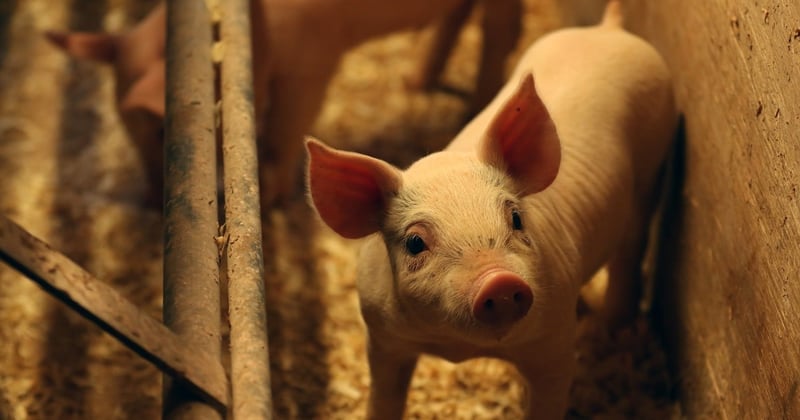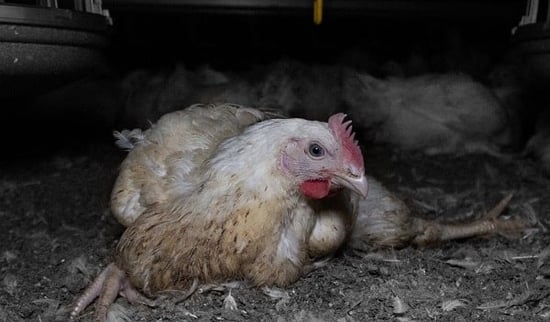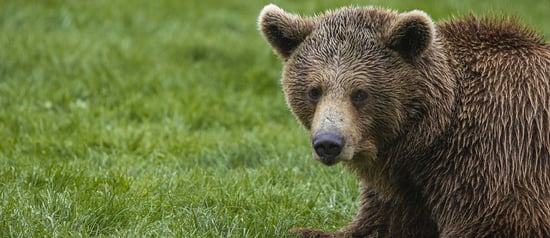
The little things pigs love in life
News
Our Global Farm Animal adviser, Sarah Ison, shares her perspective on the lives of pigs and what it takes to get their tails wagging.
Working with pigs since 2006, Sarah has had a breadth of experience observing their behaviour across many different housing situations and farms. We wanted to get to the root of what a pig needs to feel happy, and what causes their behaviour to turn south.
Pigs are socially intelligent
Pigs are highly intelligent creatures, capable of performing advanced tasks, strategizing, and demonstrating teamwork. After thousands of years of interactions with humans, they have also gathered much of the same human social intelligence that domesticated dogs have.
Our Global Farm Animal Advisor, Sarah Ison holding, a piglet. (These photos were taken at an undisclosed location in the EU)
This social intelligence is also highlighted by their unique personalities. As Sarah says, "They are amazing creatures. My favourite thing about them is their personalities. They’ve all got individual characteristics, little quirks about them that make them unique." Because of this, pigs also require a substantial amount of mental stimulation and interaction amongst each other in order to feel satisfied.
Pigs need enrichment
There are different forms of enrichment that promote mental and physical health.
According to Sarah, "Pigs suffer for several different reasons. Two of the main things that spring to mind are confinement and a lack of enrichment or mental stimulation in the barren, stark environments they are kept in at indoor large-scale systems."
Because of these conditions, mother pigs often become chronically depressed and bite the bars of their steel cages in frustration. They are bred to give birth to large litters of fast-growing piglets to maximise profit, but are constantly hungry because their food is restricted to limit weight gain and avoid complications whilst giving birth to large numbers of piglets.
About a week prior to giving birth, mother pigs are moved to another steel cage, where they remain closely confined during birth and beyond. A mother pig’s natural instinct is to build a nest to prepare for her piglets, but she cannot do this in a cage the size of an average fridge.
Sows, or mother pigs, will also benefit if given the freedom and foraging activities necessary for them to stimulate their foraging behaviours. A highly stimulating environment will lead to a smoother pregnancy, which leads to a healthier litter of piglets as well.
Enriched environments, where pregnant mother pigs (sows) are able to forage, rest comfortably, nest or play with materials such as straw, help them display their natural behaviours and gives them a good life worth living. (This photo was taken from an undisclosed location in the EU)
Pigs love to manipulable materials, and there are many different types depending on the life stage they are in.
"Ideally, for mother pigs or sows, straw is the best thing for them to have. But if it’s not possible to have a deep straw bedding pen, they can also have small amounts of straw in small racks or hanging baskets that they can access. This not only keeps them occupied with things to do and mimics the natural feeding behaviour of the sows, but it also provides them with something to fill their stomachs because they need more nutrition and more gut fill during pregnancy. Pigs are very tactile animals, they like to feel with their snouts, so anything that enables that will make them happy."
Differences in behaviour
We asked Sarah how the behaviour of a pig kept in high welfare housing would behave, as opposed to one in low welfare housing.
She quickly expressed that "it's absolutely lovely when you observe them in group housing. They can lie next to each other, they can interact with each other socially, and they also have other activities to do. The pigs are free to root around and explore their environment, so you don’t see as much of the abnormal behaviours like sham chewing and bar biting that you'd see in confined pens."
Together, we have the power to end suffering, get pigs out of cages and into social groups, give them materials to manipulate, and end mutilations.
Together, we have the power to end suffering, get pigs out of cages and into social groups, give them materials to manipulate, and end mutilations.
Factory farming
Factory farming does not just inflict unimaginable suffering on billions of animals, but the intensive and cruel methods also lead to the destruction of habitats and release climate-changing greenhouse gas emissions into the atmosphere.
Our work
We're working in Australia and around the world to end the needless suffering of animals by inspiring people to change animals’ lives for the better.



